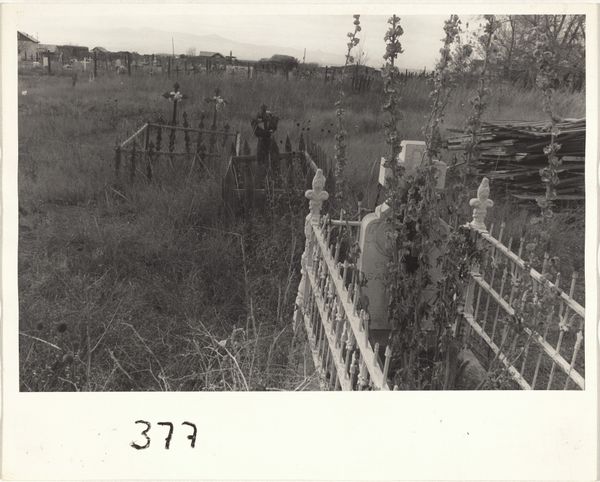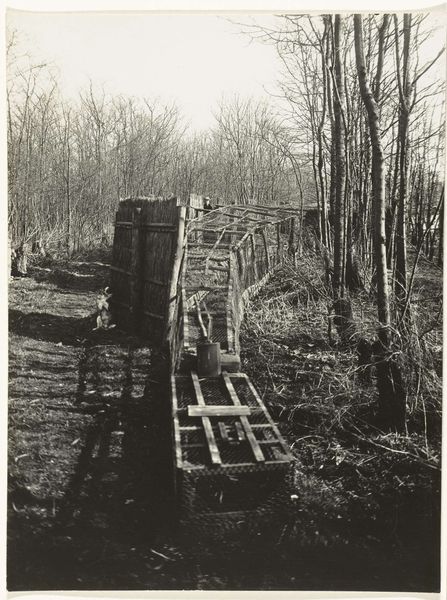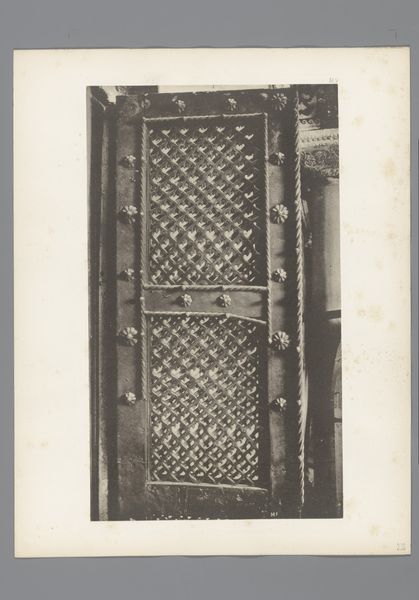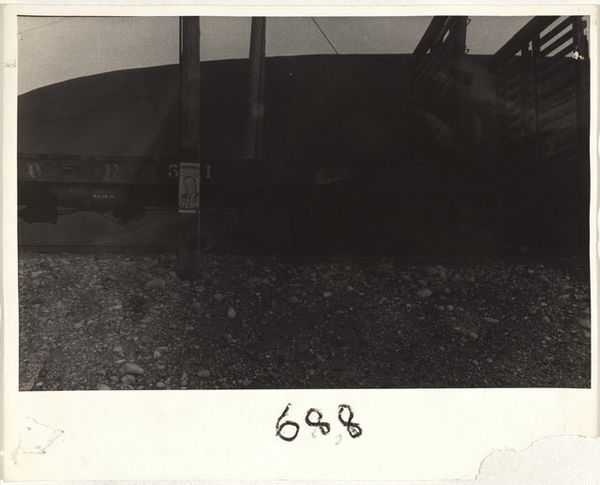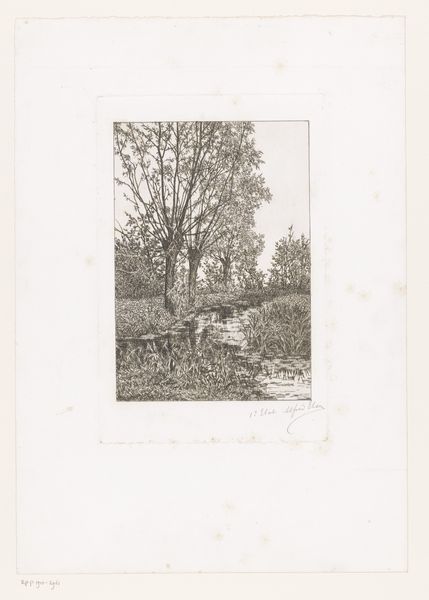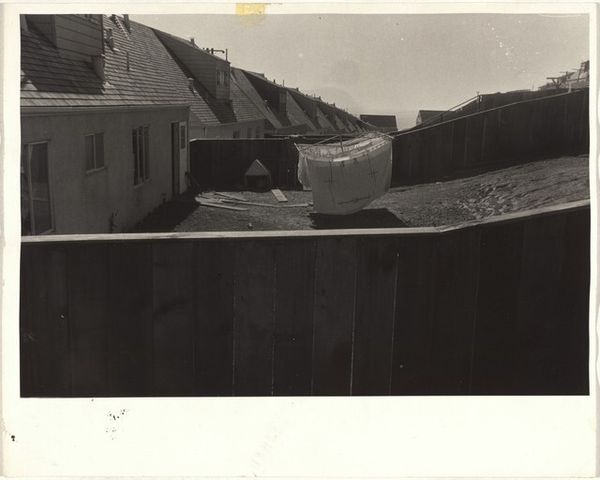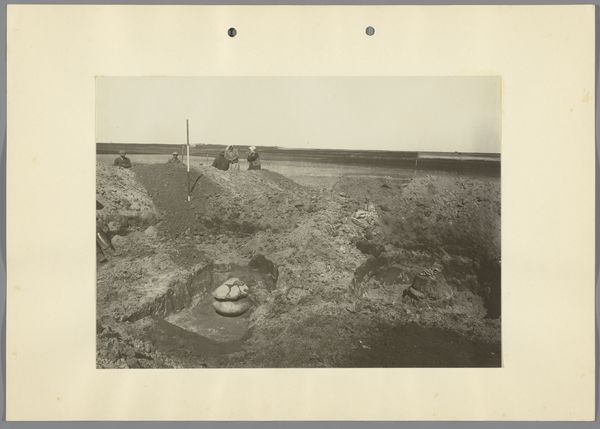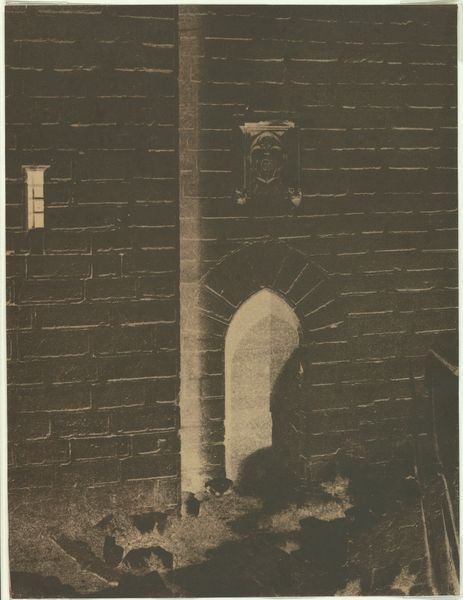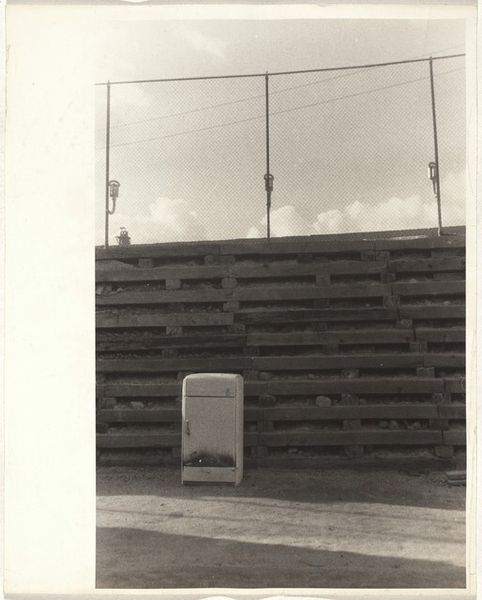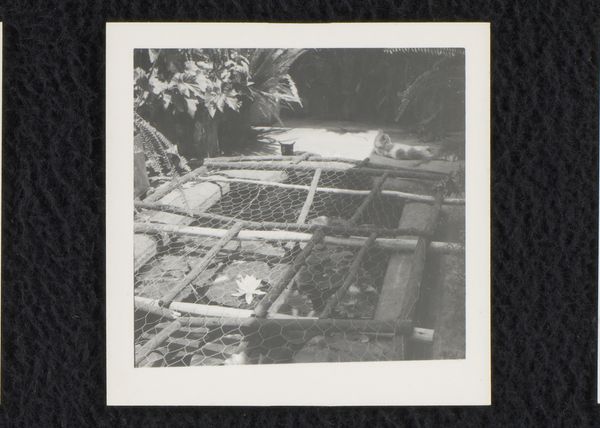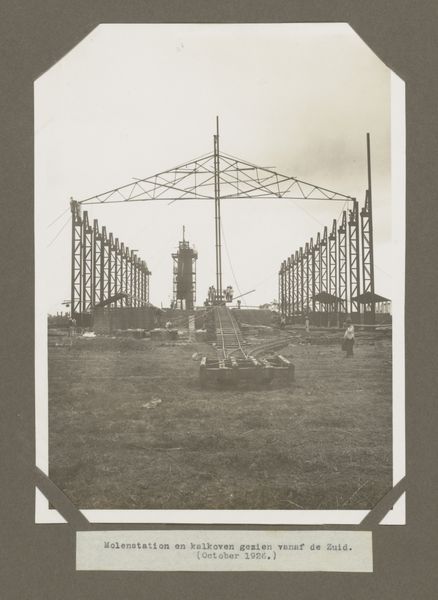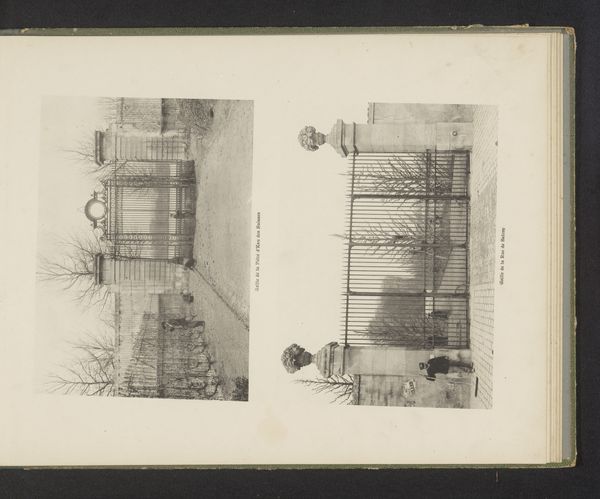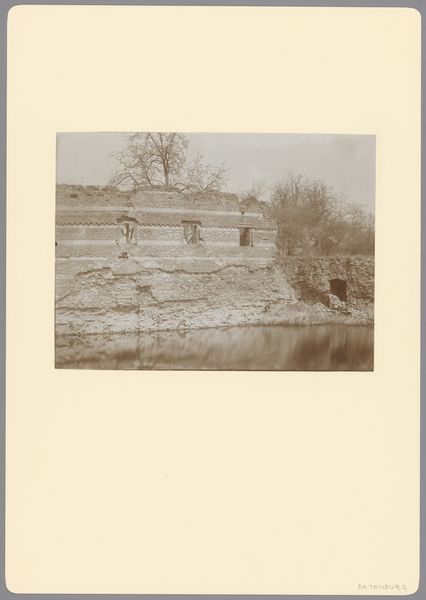
Dimensions: sheet: 25.2 x 20.2 cm (9 15/16 x 7 15/16 in.)
Copyright: National Gallery of Art: CC0 1.0
Curator: Looking at Robert Frank’s 1955 gelatin silver print, “Grave with surrounding fence--Santa Fe, New Mexico,” I'm immediately struck by its starkness. It feels incredibly desolate, doesn't it? Editor: Desolate, yes, but there’s something defiant about that little fence. Like it’s saying, “Death stops here, thank you very much." There's also a sense of forced distance. Curator: The social landscape is important here. Frank was traveling across America, and this photograph, part of his project "The Americans," is very much about seeing beyond the postcard image, about observing how people live, and ultimately, about class and social realities. Even in death. Editor: Makes you wonder who's buried there, and why *that* fence? The raw, almost careless composition...it clashes with the poignant little fence, but you have the typical southwestern landscape in the backdrop which is... serene, juxtaposed against death. Curator: Absolutely. Frank wasn’t trying to pretty things up. There’s an urgency in the photograph. This photograph wasn't about traditional beauty but revealing the truths he witnessed, challenging the American narrative of prosperity and happiness in the post-war era. Editor: It's funny how the human need to enclose things persists even when what’s enclosed has already… left. Is that star a makeshift signifier? Frank is trying to find authenticity here. Curator: Some interpretations view the photographs within “The Americans” as an outsider's critical perspective on American culture. Others praise Frank for revealing aspects of American life that were often ignored. His photography served as an inspiration to future generations of photographers, encouraging them to pursue their own unique vision of reality, even if it meant challenging prevailing norms. Editor: To distill a life to a little fenced square… but maybe that's all we can do. The grit in this piece gets you right in the gut, you know? Curator: Frank encourages us to examine those things society tends to ignore. He challenged the public to contemplate social realities by documenting diverse facets of American existence in the mid-20th century, which fostered dialogues about identity, alienation, and social structures. Editor: Absolutely, his work becomes a reminder of impermanence... or at least the end of impermanence and that, somehow, comforts me, and invites me to be comfortable in my current reality.
Comments
No comments
Be the first to comment and join the conversation on the ultimate creative platform.
